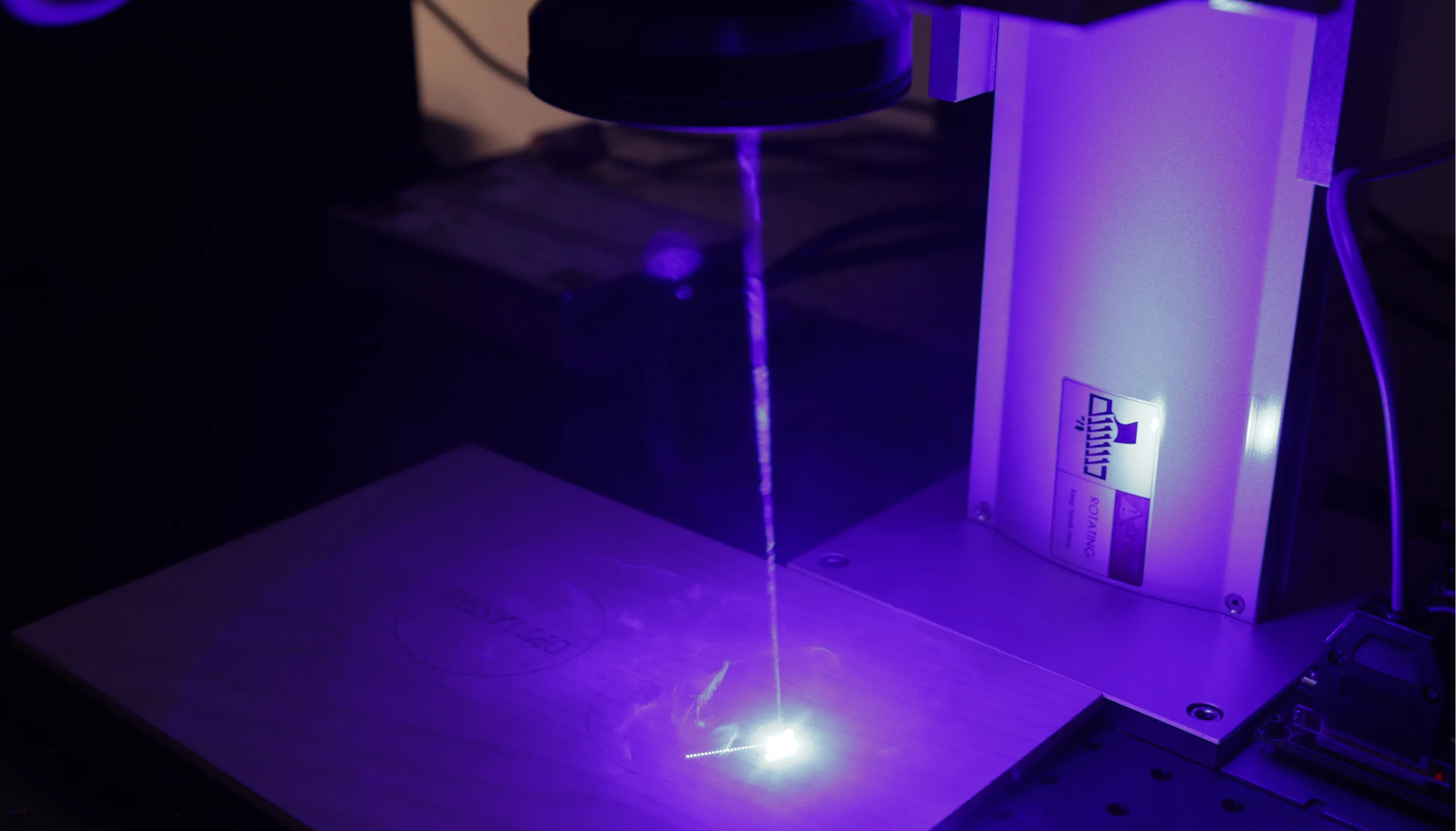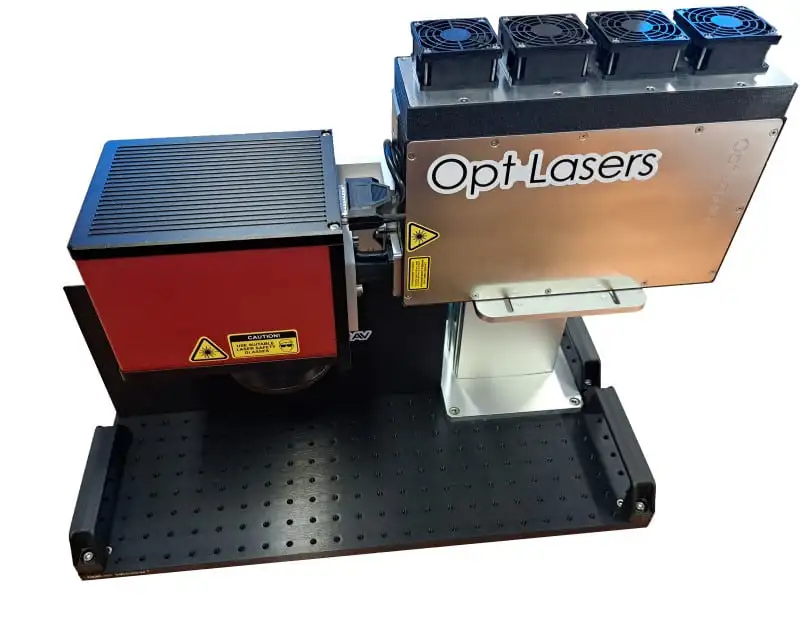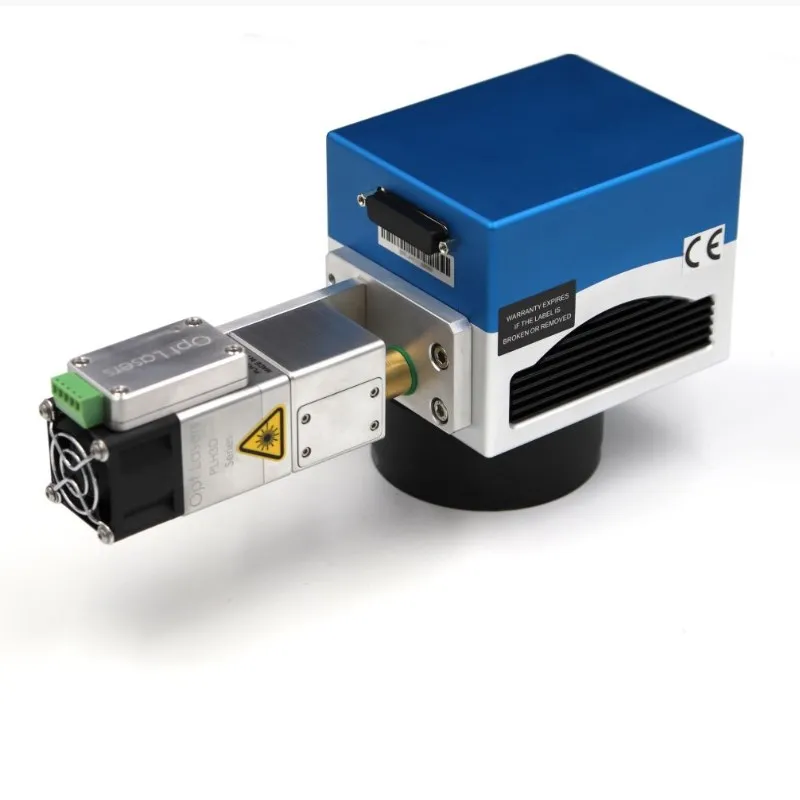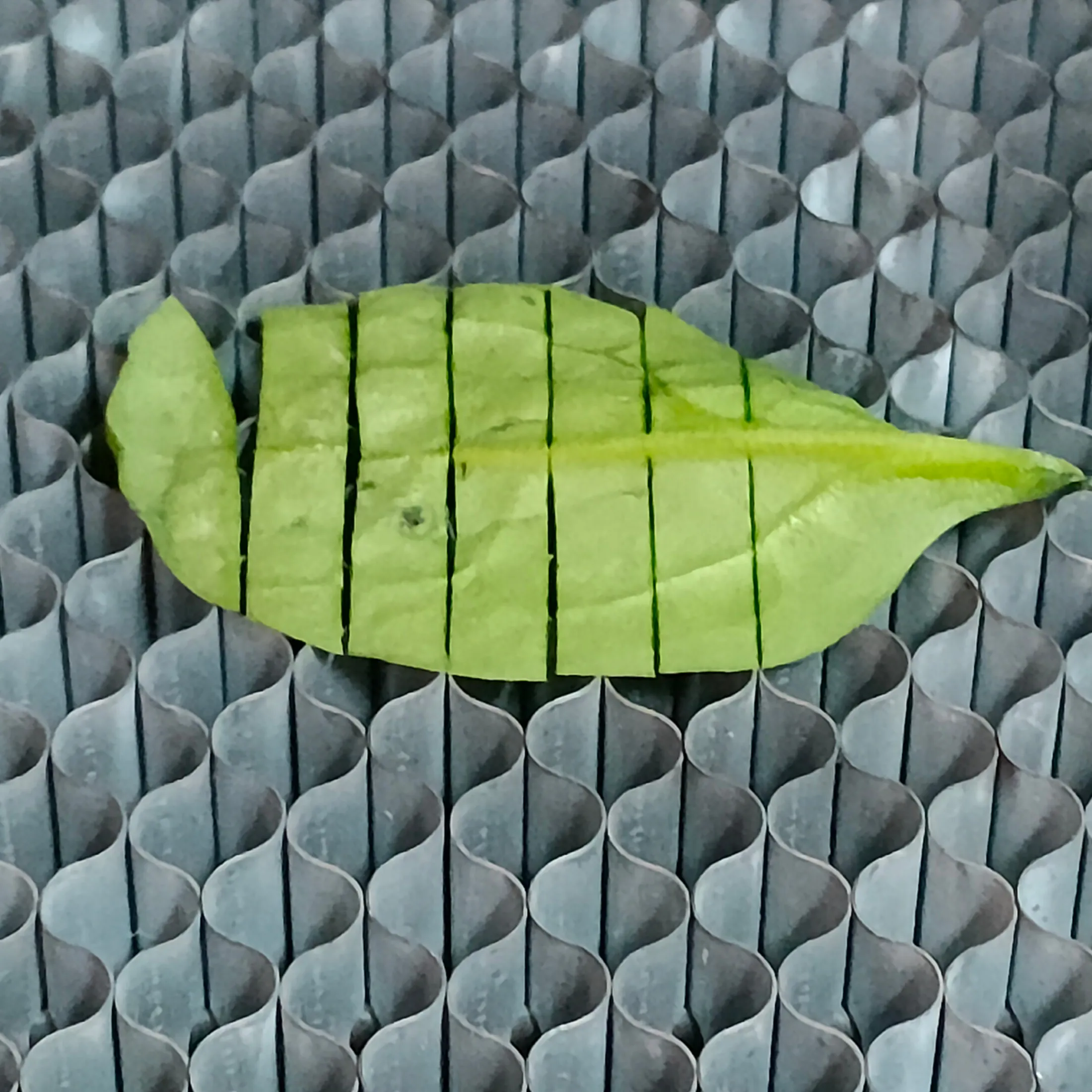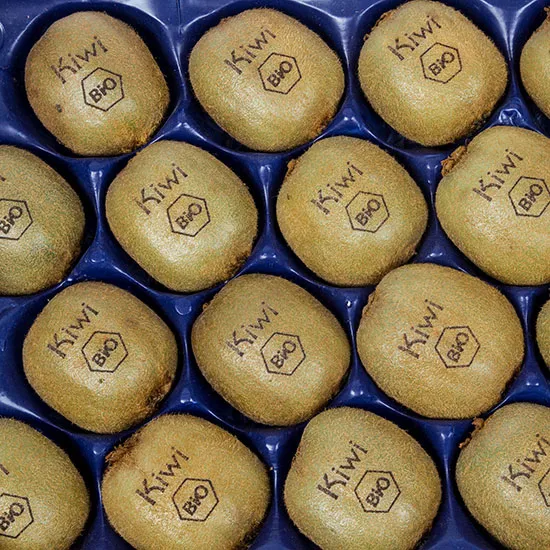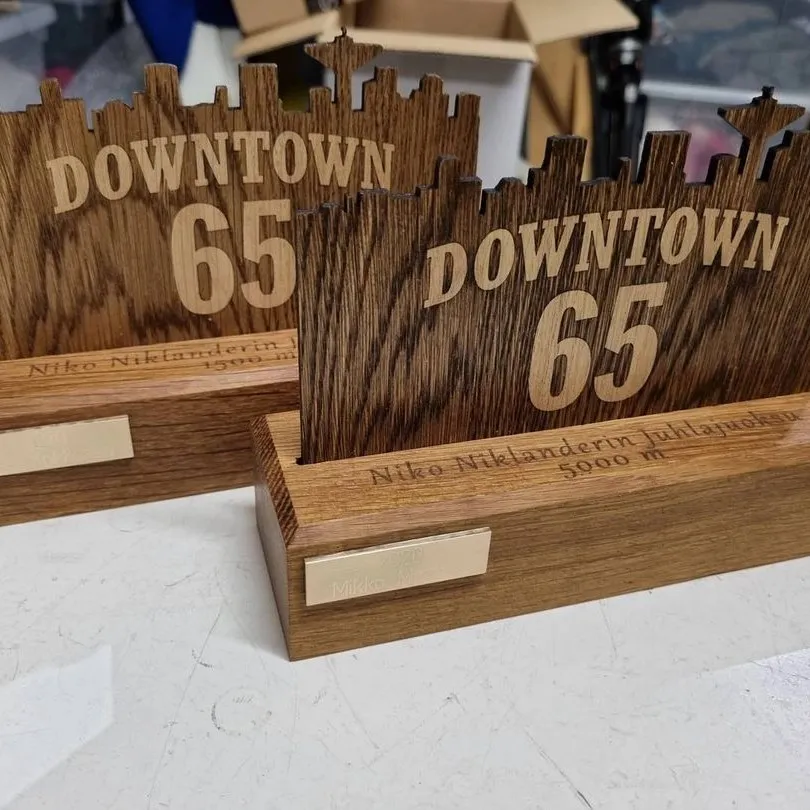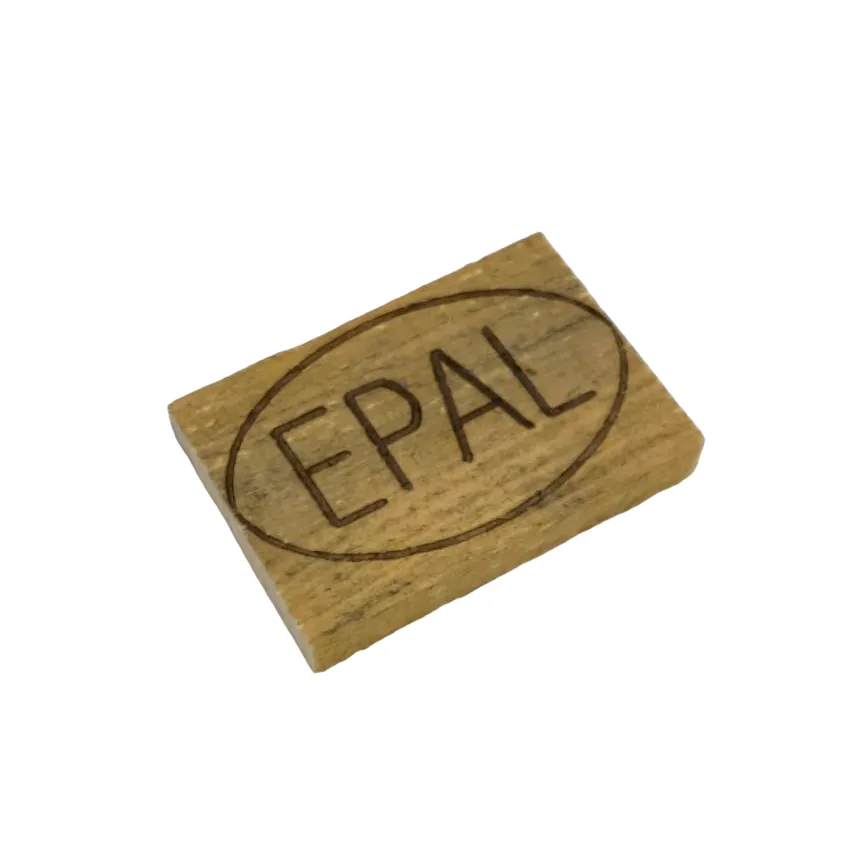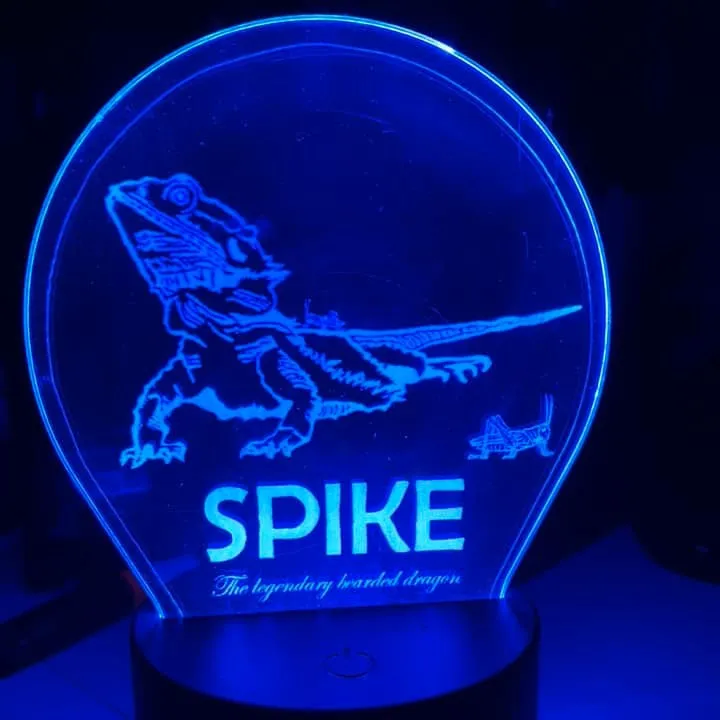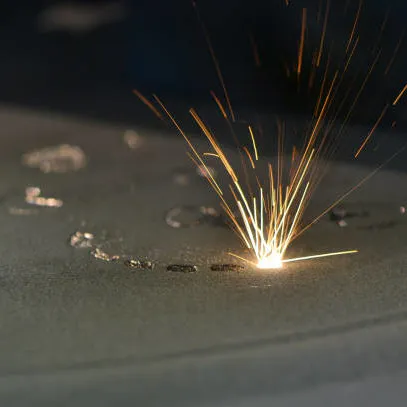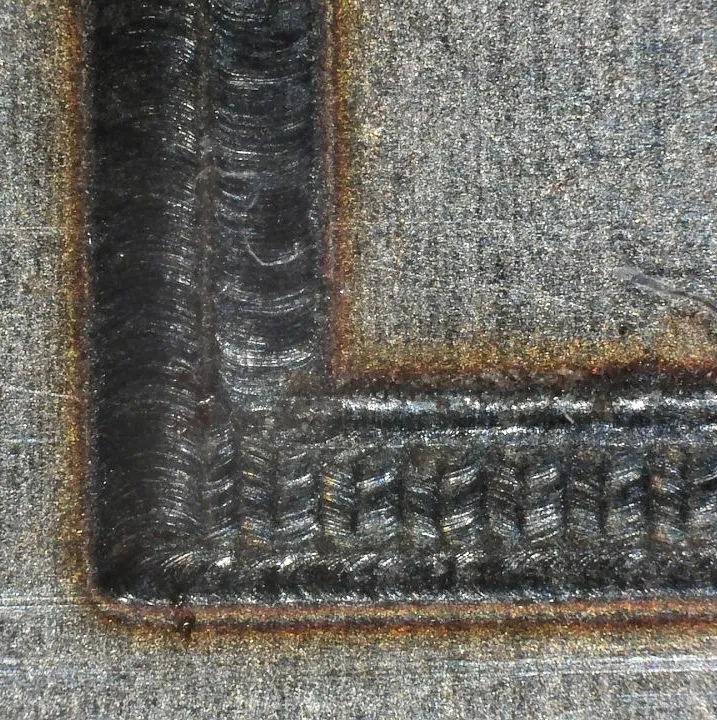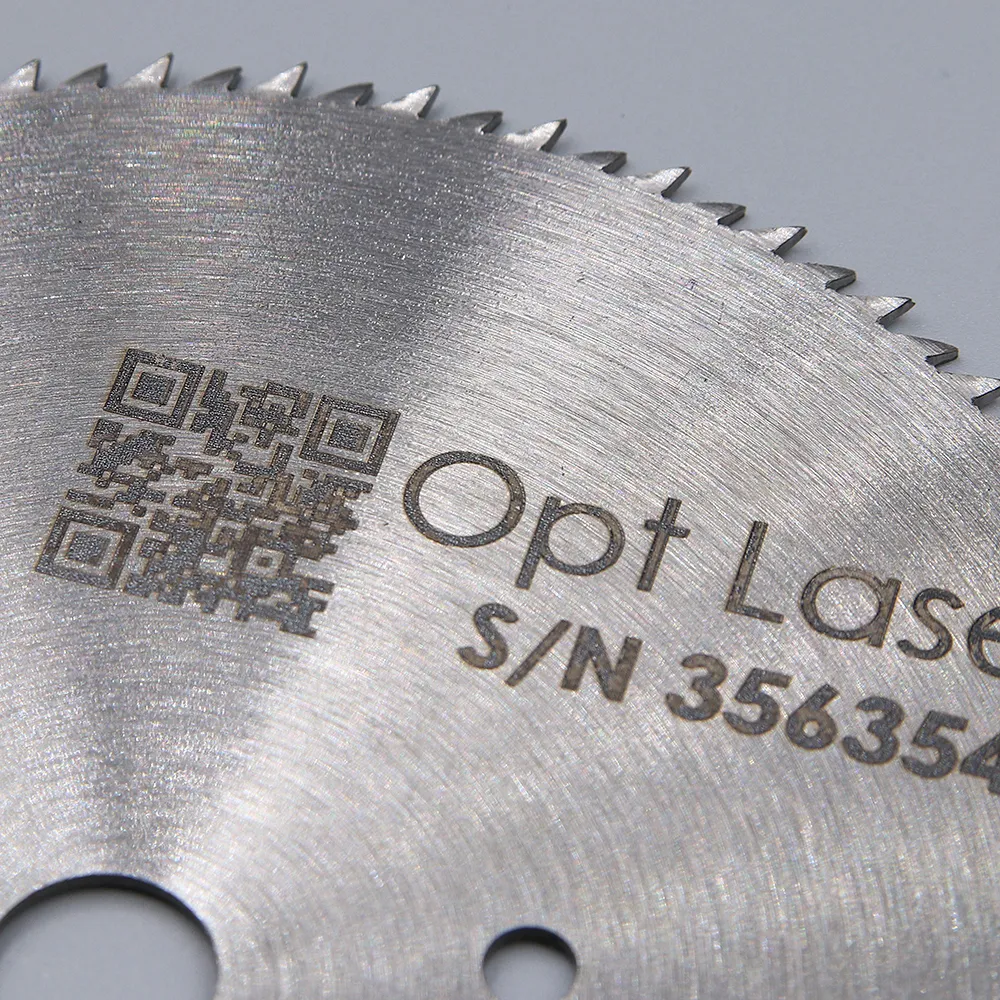Introduction to Blue Galvo Engraving Laser Systems
The Blue Galvo Engraving Laser System is a comprehensive solution composed of a laser source, galvo scan head, f-theta lens, controller, and linear guide. Our systems utilize a high-power blue laser source, employing multiple high-power blue GaN semiconductor laser diodes to generate a high brightness laser beam. The galvo scan head is responsible for positioning the laser beam in space, using two mirrors to facilitate rapid translation over the working area. The f-theta lens serves as the focusing lens, and its focal length can be selected to achieve different performance results. A single controller establishes communication between the galvo scan head, laser, and computer software. The linear guide enables vertical movement, allowing for the precise adjustment of the working distance between the lens and the working area.
Opt Lasers' Blue Galvo Engraving Laser Systems
At Opt Lasers, we have dedicated the past two years to developing high-power blue laser sources specifically designed for galvo scanning applications. Taking a step further, we have created complete systems that serve as ready-to-use solutions for engraving, marking, and numerous other applications. Our systems are designed as compact units, incorporating cooling, control units, power supply, and all necessary components. To fulfill different application needs, we offer a range of options. Opt Lasers' Blue Galvo Engraving Systems are available at various power levels, starting from 15W up to 60W, and in two different wavelengths: 405nm and 450nm. We also provide several mechanical dimensions to accommodate different requirements. Our team is committed to assisting you in selecting the appropriate blue galvo engraving system for your specific application. Feel free to reach out to us at [email protected].
| GLE-FS-15-V | GLE-FS-30-V | GLE-OEM-5-B | GLE-FS-30-B | GLE-FS-50-B | GLE-OEM-50-B | GLE-OEM-100-B | |
| Center Wavelength | 405 nm | 450 nm | |||||
| Optical Power | 15 W | 30 W | 5 W | 30 W | 50 W | 50 W | 100 W |
| Working Distance | 180 mm or 350 mm or 650 mm | ||||||
| Working Area | 100 x 100 mm or 200 x 200 mm or 300 x 300 mm | ||||||
| Minimum Spot Size1 | 180 um | 180 um | 220 um | 130 um | 130 um | 1000 um | 1000 um |
| Operation Speed 2 | up to 2000 mm/s | ||||||
| Laser's Electro-to-Optical Efficiency | 26 % | 24 % | 28 % | 27 % | 24 % | 24 % | 30 % |
| Power Consumption | 150 W | 200 W | 50 W | 200 W | 300 W | 300 W | 600 W |
1- values provided for 170mm working distance
2- for angles +/- 10 degrees
GLE-FS-50-B
GLE-OEM-5-B
Main Advantages of Blue Galvo Engraving Laser Systems
Electro-to-Optical Conversion Efficiency
The Blue Galvo Engraving Laser System offers superior electro-to-optical conversion efficiency compared to other systems. While both blue galvo lasers and fiber galvo lasers exhibit similar efficiencies of 20-30%, CO2 galvo lasers have an efficiency of only 6-7%. Additionally, CO2 lasers require power-hungry chillers, resulting in even lower overall efficiency. By utilizing a blue galvo laser system, you can significantly reduce electricity consumption and operational costs, making it a more cost-efficient option for production lines.
Material Processing Efficiency
The blue galvo laser's wavelength provides higher absorption rates for a wide range of materials compared to fiber galvo lasers and CO2 galvo lasers. This characteristic is particularly notable in technical ceramics like Alumina (Al2O3), Boron Carbide (B4C), Silicon Carbide (SiC), Titanium Diboride (TiB2), and Tungsten Carbide (WC). Moreover, blue galvo lasers outperform other systems in wood, fabrics, leather, metals, and organic materials. The improved absorption rates ensure efficient and effective material processing.
Applications of Blue Galvo Engraving Laser Systems
Blue Galvo Engraving Laser Systems find applications in a wide range of industries. While industrial applications requiring fast material processing are common, these systems are also utilized in agriculture, medical, and research fields. The list of applications continues to expand, with new uses emerging each year. Popular applications include food, fruits, and vegetables labeling; laser processing of plants, crops, and weeds; engraving on wood, ceramics, plastics, and metals;
Advantages of Blue Galvo Laser In Depth
Unlike other types of galvo laser engravers, a blue galvo laser engraver (ie. a galvo laser engraver using a laser module with laser wavelength between 445 nm and 450 nm) offers unrivaled precision and process efficiency. The engraving process efficiency for any galvo laser engraver depends on two main parameters:
1. Galvo Laser Engraver's electrical-to-optical conversion efficiency.
This first parameter describes how much electrical power a galvo laser engraver consumes to produce a given optical power output.
While both blue galvo lasers and fiber galvo lasers have a comparable electrical-to-optical power conversion efficiency of 25-30 percent, a CO2 galvo laser has the efficiency of only 6-7 percent. More importantly, this 6.5% efficiency only counts the efficiency at the CO2 laser tube, hence it does not count the electrical-power-hungry chiller required by a CO2 laser tube. Therefore, in practice, the efficiency of a CO2 laser is even lower.
A typical CO2 galvo laser's chiller has a COP (chiller's coefficient of performance) of 3 to 5. The value of the COP tells you the ratio of dissipated heat to the electrical power used by the chiller. With the CO2 laser tube's electrical-to-optical power conversion efficiency of 6.5 percent, this means that a 3.000 kW (3000 Watts of electrical power usage) CO2 galvo laser outputs 195 Watts of optical (laser power). And 2805 Watts of electrical power are lost as the heat load that needs to be dissipated by the chiller. With a COP of 3-5, this means that a 3 kW CO2 laser's chiller will consume further 935 Watts to 561 Watts. Hence, the total electrical-to-optical efficiency of a CO2 galvo laser system is between 4.96 percent (=195/3935) and 5.48% (=195/3561).
In comparison, fiber galvo lasers and blue galvo lasers have a total electrical-to-optical conversion efficiency of 20-25%.
Assuming a 10 000 working hours period and a kWh price of $0.24, a single 200 W CO2 laser (with 3935 W power usage) consumes additional $9444 in electricity costs. In the same time period of 10 000 working hours a galvo laser engraver with a 200 W blue laser module consumes just $1920-$2880 worth of electricity. Analogically, a 50 W blue galvo laser engraver consumes $480-$720 worth of electricity over 10 000 working hours. With the operation costs included, using a blue galvo laser engraver in a production line is more cost-efficient than using a CO2 galvo laser even if the CO2 laser's wavelength has 40% higher absorption rate on a given material. Effectively, one can use two (or more) blue galvo laser engravers instead of a single CO2 galvo laser and have both higher manufacturing throughput and money savings by doing so.
2. The engraved material's absorption of the galvo laser's wavelength
The second parameter describes how much of the incoming laser beam's power is absorbed and converted into useful work. This varies from material to material, however, for the majority of materials, the blue galvo laser's wavelength shows a higher absorption than the wavelengths of fiber galvo lasers and CO2 galvo lasers.
This is particularly pronounced in ceramics, and particularly in technical ceramics such as Alumina (Al2O3), Boron Carbide (B4C), Silicon Carbide (SiC), Titanium Diboride (TiB2) and Tungsten Carbide (WC). In technical ceramics, the absorption of blue galvo laser engraver's wavelength increases exponentially with temperature. Effectively, near its melting point, the absorption of blue laser's wavelength, on 6H-SiC, can be even 6000 times higher than the CO2 laser's wavelength.
Galvo Laser Performance for Different Engraving Applications
Galvo Laser Engravers on Wood and Wood-Based Materials
For wood and wood-based materials, the blue (445-450 nm) galvo laser engraver offers the best performance. This results from much higher operational costs of a CO2 laser, which make it simply a more expensive option to sustain. Fiber galvo lasers are the worst performing galvo laser engravers in this application due to much lower absorption than the other two main types of galvo engravers.
Case Study: Galvo Laser Engraving Plywood, Pine Wood and Beechwood
The video below shows a 30 W blue galvo laser engraver in the process of laser engraving a piece of plywood. Measuring 8 cm by 2 cm (3.15 inches by 0.8 inches), the engraving on plywood is done in approximately a second with Opt Lasers' blue galvo laser.
The blue galvo laser engraver has the efficiency of 20-25% and, based on the available research papers, blue 445-450 nm wavelength has the absorption rate of 68% and 73% on pine wood and beech wood respectively. A CO2 galvo laser engraver has an overall energy efficiency of 5% and its wavelength has the absortion rate of 85% and 88% on the same two materials. Hence a simple calculation shows that a blue galvo laser engraver is approximately 3.4 times more efficient than a CO2 galvo laser at the same power consumption. The graph, taken from the previously referenced academic paper, shows the absorption rates for these materials.
Galvo Laser Engravers on Leather
Laser engraving leather is most efficient when it's performed with a blue galvo laser engraver. Laser engraving it with CO2 galvo laser engraver produces burn marks, is much slower, and costs much more money. A 1.06 µm fiber galvo laser has the worst performance in the laser engraving application because 80% of its laser beam is reflected off the leather surface.
Case Study: Galvo Laser Engraving Leather
Below you can watch a video which shows the process of engraving leather with a 30 W blue galvo laser engraver. The engraving on the leather is done in less than a second.
Academic research has shown that the reflection of blue laser wavelength stands at 12% for a blue 445 nm laser beam and approximately 62% for a 1.06 µm fibre laser beam. Since a blue laser beam is visible to human eye, this means that the absorption rate of blue laser beam on leather is 88%. A maximum of only 38% of a 1.06 µm fiber laser beam can get absorbed on leather, which guarantees that a 1.06 µm fiber galvo laser engraver will perform worse in leather engraving. In fact any laser with wavelength longer than 550 nm will perform worse than a blue laser in leather engraving applications.
Fiber galvo lasers will perform worse than blue galvo laser for engraving the majority of natural mammalian an reptilian leather varieties. These leather varieties include leather from animals such as pig, cattle, sheep, lizard, snake, and crocodile. While fiber galvo lasers have higher wavelength absorption rate on regenarated leather and deer leather, it may only perform as good as a blue galvo laser engraver on a deerskin leather.
While there is no absorption (or reflection) data on wavelengths longer than 2.5 µm, it can be assumed that the absorption behaviour for longer wavelengths follows the absorption of melanin, which is a natural pigment found in most organisms, and the primary determinant of skin colour. The picture below shows that melanin absorption falls with increasing laser wavelength. In addition, the University of Cambridge's article on melanin, from which this graph originates, states that absorption on melanin is almost completely attenuated for wavelengths longer than 700 nm.
Galvo Laser Engravers on Metals
Metals differ from other applications of galvo laser engravers, because metals tend to have very high thermal conductivity. Because of that, to engrave a metal material in an efficient manner, you need to have either a highly focused laser beam with high power density or a laser with high pulse energy. Apart from that, the metal material in question needs to have high absorption rate of your laser's wavelength. This translates to the fact that the most efficient lasers for engraving on metals are high-power blue galvo laser engravers, pulsed fiber galvo laser engravers as well as high-optical-power-density blue laser heads. CO2 galvo lasers, on the other hand, are highly inefficient for engraving metals.
Case Study: Galvo Laser Engraving Metals
The two videos present a blue galvo laser marking stainless steel and tool steel.
The absorption rates differ from metal to metal as indicated by the graph below. The graph below shows absorption rates, of wavelengths between 200 nm and 12.8 µm, for most-commonly used metals such as Copper, Gold, Titanium, (bare) Aluminium, Nickel, and Silver.
Another graph, presented below shows reflection rates for a variety of metals. Apart from the materials presented in the previous graph above, it shows behaviour of additional metals such as pure Iron, Tungsten, Platinium, Chromium, Berrylium, and Molibdenum. However, it is worth noting that the below reflectance graph shows the reflectance of metals with perfectly smooth surfaces, since the less smooth a surface is, the more it absorbs shorter laser wavelengths.
From the date presented by the two above graphs, it follows that blue galvo laser will be more efficient than longer wavelength galvo lasers for engraving all the aforementioned metals except for chromium. Metals for which a blue galvo laser engraver will be critically more efficient are Gold, Copper, Platinum and Tungsten. Interestingly, a blue galvo laser can not only engrave copper but also perform copper microwelding.
Nevertheless, in the case of bare (and perfectly smooth) Aluminium, a fiber galvo laser with wavelength between 500 nm and 900 nm will be a more effective choice. A blue galvo laser will still be more effective for bare Aluminium than a commonly used 1.06 µm fiber galvo laser.
Interestingly, engraving Tungsten with a blue galvo laser is a very efficient application, especially if Tungsten is not smooth as indicated in the picture on the right hand side below. The video on the left hand side presents a 30 W blue galvo laser engraver engraving Tungsten.
Galvo Laser Engravers on Fabrics and Textiles
In the application of laser processing textiles and fabrics, a blue galvo laser engraver is also a better solution than other types of galvo laser engraver products. This the case for both natural and artificial fabrics. 1.06 µm fiber galvo lasers struggle with fabrics since most fabrics reflect the wavelengths of fibre galvo lasers. It is also possible to engrave and cut fabrics and textiles with CO2 galvo lasers but it is done at much lower speed and much higher operational costs than if a blue galvo laser is used.
Case Study: Galvo Laser Engraving Fabrics and Textiles
The video underneath shows a 30 W blue galvo laser in the process of engraving cotton, which takes just a fraction of a second.
In two graphs below you can see the wavelength reflection rates for different fabrics such as cotton, nylon, rayon, polyester, acrylic, wool and cashmere. The wavelength spectrum covered in the graphs is between 350 nm and 2.35 µm. The absorption rate of blue galvo laser's 450 nm wavelength is between 74% and 97% with a typical absorption rate of 90%.
It is however worth noting that fabrics and textiles are available with different colours. A blue galvo laser engraver will perform engraving faster, the darker the material is. Overall, in the case of a blue laser, the speed will depend on the tint and shade of the particular textile or fabric. Blue lasers will also perform worse on very reflective, blue or white textiles and fabrics. Nevertheless, a blue galvo laser is the best solution for engraving (and cutting) fabrics and textiles and will perform better than any CO2 laser or fiber laser.
Galvo Laser Engravers on Food and Organic Materials
Fiber and CO2 galvo lasers struggle with engraving food and the vast majority of organic materials. This is because food and organic materials have high water content, often as high as 70%. Water absorbs the majority of laser spectrum, however it transmits almost full blue laser beams as the absorption coefficient for water is 3*10^-4 cm-1 for 450 nm laser. For 1.06 µm wavelength, the absorption rate is 6000 cm-1, while for a 10.6 µm CO2 laser beam the absorption even higher as it is 7000000 cm-1. This means that the practically all of a CO2 and fiber laser beams' power is spent on evaporating water, while a blue laser ignores water content and engraves on the actual organic material that need to be engraved, making the process much faster.
In addition to that, plant species are very absorbent for blue galvo laser beams. The blue galvo laser's wavelength absorption rate on green vegetation is as high as 93%, as shown in the graph below.
Nevertheless there are organic materials that other types of galvo lasers are good for. As an example, hydroxylapatite (sometimes incorrently named as hydroxyapatite) is a major component of enamel in teeth. Hydroxylapatite, in a slightly modified form, also accounts for up to 70% of human bone. As hydroxylapatite is much more readily absorbed by 10.6 µm CO2 galvo laser beam, this type of galvo laser engraver will be the most efficient one for cutting and engraving on bones and teeth. The wavelength absorption graph for compounds such as haemoglobin, hydroxylapatite, melanin and water is shown below. It shows that 10.6 µm galvo laser's wavelength is absorbed 10000 times more than a blue laser's wavelength.
However, the above graph also shows that blue lasers are the most efficiently absorbed laser beams for haemoglobin, which translates to the fact that a blue galvo laser is most optimal solution for surgical procedures.
Galvo Laser Engravers on Ceramics
The ceramics category includes both manufactured ceramics such as Alumina or Titanium Diboride, but also natural stone varieties such as for example bauxite and marble.
Ceramics tend to react better to shorter wavelengths. However, the absorption rates for different ceramics vary greatly, with blue galvo lasers being the best solution for technical ceramics used in armor components. This includes ceramic armor in tanks, bulletproof vests. Some of technical ceramics that are efficiently engraved with blue lasers, are also used in penetration shells and artillery. In technical ceramics used in armor components, the absorption of blue galvo laser engraver's wavelength, compared to longer wavelength galvo lasers, increases exponentially with temperature. Such ceramics include Alumina (Al2O3), Boron Carbide (B4C), Silicon Carbide (SiC), Titanium Diboride (TiB2) and Tungsten Carbide (WC).
Effectively, in case of melted Alumina, the absorption rate is drastically increased for shorter wavelengths. Effectively, the melted Alumina's absorption of blue laser's wavelength is up to 300 times higher than the fiber laser's wavelength as indicated by the graph below. [V.K. Bityukov et al., Absorption Coefficient of Molten Aluminum Oxide in Semitransparent Spectral Range, Applied Physics Research, Page 51, Vol. 5, January 2013. DOI: 10.5539/APR.V5N1P51].
Other types of Galvo laser engravers most often struggle with these materials. A fiber galvo laser, while performing much worse than a blue galvo laser, is still often working better than a CO2 galvo laser with the exception of Alumina ceramic. Nevertheless, for these technical ceramics, a blue galvo laser engraver offers a drastic increase in the manufacturing productivity.
The graph below shows the absorption rates of different galvo lasers on Silicon Carbide. It is worth noting that each increase of 300 degrees Kelvin corresponds to roughly 0.2 eV movement, in the absorption, towards shorter wavelengths.
EU Project

Nazwa beneficjenta: TOMORROW’S SYSTEM Limited Liability Company
Project title: "Development of a multi-diode laser source technology based on diodes with wavelengths in the range of 350-550 nm, allowing modification of laser beam parameters to optimize cutting, engraving and sintering processes of materials used in industry."
Grant agreement number: POIR.01.01.01-00-0526/20-00
Project value: 5 253 477.21 PLN
Grant value: 3 751 829.24 PLN
Project no: POIR.01.01.01-00-0526/20 is co-financed by the European Union with funds from the European Regional Development Fund under the Intelligent Development Operational Program 2014-2020
The project is carried out under the competition of the National Center for Research and Development: 3/1.1.1/2020 Fast Track 3_2020


